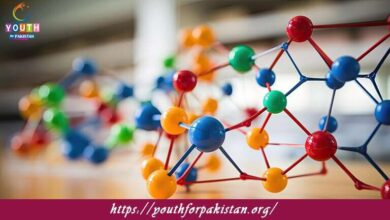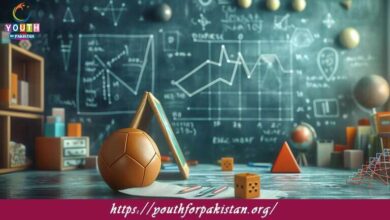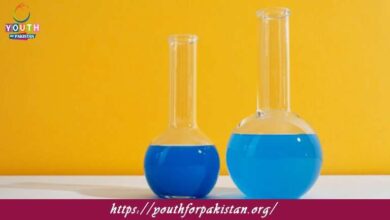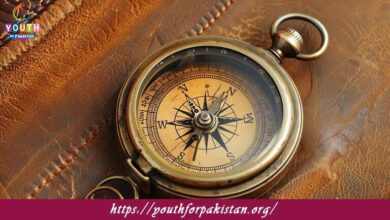12th Class Biology Chapter 15 MCQs with Answers
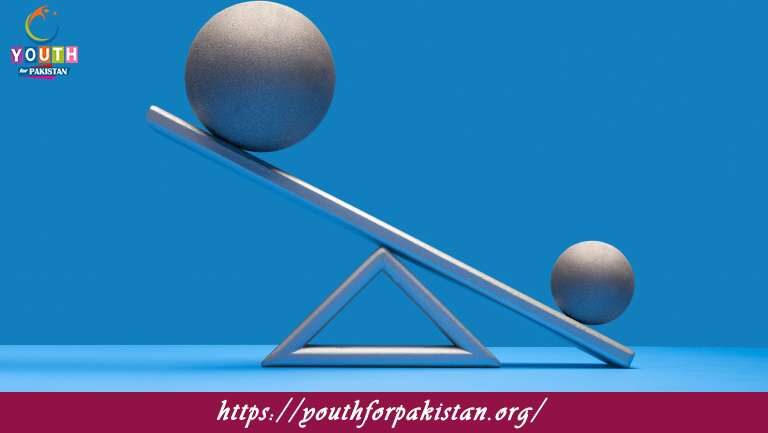
Master the concept of homeostasis with our comprehensive 12th Class Biology Chapter 15 MCQs. These practice questions focus on key topics such as temperature regulation, water balance, and cellular equilibrium. Perfectly aligned with your syllabus, these MCQs help sharpen your understanding for exams and improve retention. Boost your preparation with trending keywords like biology MCQs for exams, Homeostasis quiz, and biology chapter tests. Tackle challenging questions and stay ahead!
What is homeostasis?
a) A state of imbalance
b) The body’s ability to maintain stable internal conditions
c) A disease caused by external factors
d) A process that occurs only in plants
Which body system plays a significant role in maintaining homeostasis?
a) Nervous system
b) Respiratory system
c) Digestive system
d) Muscular system
Which of the following is an example of negative feedback in homeostasis?
a) Shivering to generate heat in cold weather
b) Sweating to cool down the body on a hot day
c) Consuming food to replenish energy levels
d) Accelerating the heart rate during exercise
The body’s temperature is regulated by which part of the brain?
a) Cerebellum
b) Medulla oblongata
c) Hypothalamus
d) Amygdala
Which hormone is responsible for regulating glucose levels in the blood?
a) Insulin
b) Testosterone
c) Estrogen
d) Melatonin
When blood sugar levels drop, what hormone is released to increase them?
a) Insulin
b) Glucagon
c) Thyroxine
d) Cortisol
Which of the following is NOT a method of heat loss during hot weather?
a) Sweating
b) Vasodilation
c) Shivering
d) Radiating heat from the skin
Which organ is responsible for filtering and removing waste products from the blood?
a) Liver
b) Kidneys
c) Pancreas
d) Spleen
The process of maintaining a stable internal environment despite changes in the external environment is known as:
a) Metabolism
b) Homeostasis
c) Adaptation
d) Thermoregulation
What is the primary role of the respiratory system in homeostasis?
a) Regulating body temperature
b) Transporting nutrients to cells
c) Removing carbon dioxide from the body
d) Producing hormones for growth
Which of the following is an example of a positive feedback loop in homeostasis?
a) Blood clotting after an injury
b) Sweating to cool down the body
c) Regulation of blood glucose levels
d) Maintaining constant body temperature
In response to high blood pressure, the body may initiate a process to lower it. This is an example of:
a) Positive feedback
b) Negative feedback
c) Homeostatic imbalance
d) Adaptation
The hormone responsible for the fight-or-flight response in stressful situations is:
a) Cortisol
b) Estrogen
c) Testosterone
d) Adrenaline (Epinephrine)
What is the role of the skin in maintaining homeostasis?
a) Production of hormones
b) Regulation of body temperature
c) Pumping blood to the heart
d) Absorption of nutrients
When blood sugar levels rise, which hormone is released to decrease them?
a) Estrogen
b) Testosterone
c) Glucagon
d) Insulin
Which part of the brain controls the secretion of hormones from the pituitary gland?
a) Hypothalamus
b) Cerebellum
c) Thalamus
d) Hippocampus
Which of the following is NOT a component of the feedback loop in homeostasis?
a) Sensor
b) Effector
c) Receptor
d) Stimulus
The process of breaking down complex substances into simpler forms for energy production is called:
a) Anabolism
b) Catabolism
c) Photosynthesis
d) Oxidation
The release of antidiuretic hormone (ADH) helps in the conservation of:
a) Water
b) Glucose
c) Sodium
d) Calcium
The body’s internal temperature is typically around:
a) 50°C (122°F)
b) 37°C (98.6°F)
c) 25°C (77°F)
d) 10°C (50°F)
Which of the following is a response to low blood sugar levels?
a) Vasodilation
b) Sweating
c) Glycogen breakdown
d) Pupil constriction
Which organ regulates the body’s metabolism and plays a crucial role in maintaining
homeostasis?
a) Pancreas
b) Liver
c) Spleen
d) Gallbladder
The process of maintaining proper pH levels in the body is essential for:
a) Nerve function
b) Muscle contraction
c) Proper enzyme activity
d) All of the above
Which of the following is an example of an internal stimulus that triggers homeostatic regulation?
a) A drop in environmental temperature
b) Feeling hungry before mealtime
c) Exposure to bright light
d) Physical injury to the skin
The process of sweating is an example of the body’s response to:
a) Low blood pressure
b) High body temperature
c) Low blood sugar levels
d) High blood pressure
Which of the following is NOT a function of the urinary system in maintaining homeostasis?
a) Regulation of blood pressure
b) Removal of waste products
c) Production of red blood cells
d) Regulation of electrolyte levels
Which hormone is responsible for calcium regulation in the blood?
a) Thyroxine
b) Insulin
c) Calcitonin
d) Glucagon
What is the primary function of the hypothalamus in maintaining homeostasis?
a) Regulation of body temperature
b) Production of hormones
c) Digestion of food
d) Pumping blood to the heart
When blood sugar levels are high, the pancreas releases which hormone to lower them?
a) Insulin
b) Glucagon
c) Estrogen
d) Cortisol
The body’s response to an increase in blood pressure involves:
a) Vasodilation
b) Decreased heart rate
c) Constriction of blood vessels
d) Release of adrenaline
What is the purpose of vasoconstriction in maintaining homeostasis?
a) To decrease blood flow to vital organs
b) To increase blood flow to the extremities
c) To regulate body temperature
d) To reduce blood pressure
The process of shivering is a mechanism to:
a) Generate heat and increase body temperature
b) Cool down the body and lower temperature
c) Increase blood flow to the skin
d) Release excess energy from the body
Which of the following is NOT a factor that can disrupt homeostasis?
a) Environmental changes
b) Hormonal regulation
c) Physical injury
d) Genetic factors
The release of which hormone is responsible for increasing heart rate during times of stress or danger?
a) Estrogen
b) Insulin
c) Thyroxine
d) Adrenaline (Epinephrine)
Which of the following statements is true about homeostasis?
a) It only occurs in animals, not in plants.
b) It involves keeping external conditions constant.
c) It is a static, unchanging process.
d) It helps maintain stable internal conditions.
The primary organ responsible for detoxifying harmful substances in the body is the:
a) Liver
b) Kidneys
c) Lungs
d) Pancreas
Which of the following is an example of an external stimulus that triggers homeostatic regulation?
a) Feeling thirsty after eating salty food
b) Sweating during exercise
c) Increased heart rate during stress
d) Feeling sleepy after a long day
The body’s response to low blood pressure involves:
a) Vasodilation
b) Increased heart rate
c) Constriction of blood vessels
d) Release of insulin
The process of converting glucose into energy with the help of oxygen is known as:
a) Fermentation
b) Glycolysis
c) Cellular respiration
d) Photosynthesis
Which hormone is responsible for stimulating water reabsorption in the kidneys?
a) Insulin
b) Glucagon
c) Aldosterone
d) Thyroxine
Which of the following is a response to high blood sugar levels?
a) Glycogen breakdown
b) Vasodilation
c) Pupil dilation
d) Release of adrenaline
The body’s response to an increase in body temperature involves:
a) Sweating
b) Shivering
c) Constriction of blood vessels
d) Release of glucagon
The hormone responsible for increasing blood sugar levels during times of stress or danger is:
a) Thyroxine
b) Insulin
c) Cortisol
d) Glucagon
The process of maintaining the balance of water and electrolytes in the body is primarily controlled by the:
a) Liver
b) Kidneys
c) Pancreas
d) Heart
Which of the following is an example of an effector in a homeostatic feedback loop?
a) The brain
b) The heart
c) The lungs
d) The sweat glands
The hormone responsible for increasing blood sugar levels by stimulating the breakdown of glycogen in the liver is:
a) Glucagon
b) Insulin
c) Thyroxine
d) Estrogen
When blood pressure decreases, the body may initiate a process to raise it. This is an example of:
a) Positive feedback
b) Negative feedback
c) Homeostatic imbalance
d) Adaptation
The hormone responsible for increasing heart rate and blood flow to the muscles during exercise is:
a) Insulin
b) Estrogen
c) Testosterone
d) Adrenaline (Epinephrine)
Which of the following is an example of a disruption in homeostasis?
a) The body sweating to cool down on a hot day
b) The body increasing heart rate during exercise
c) The body shivering to generate heat in cold weather
d) The body releasing insulin to lower blood sugar levels
The process of maintaining a stable internal environment through physical and behavioral changes is called:
a) Adaptation
b) Evolution
c) Metabolism
d) Homeostasis
The body’s response to high blood sugar involves:
a) Vasodilation
b) Glycogen breakdown
c) Constriction of blood vessels
d) Increased heart rate
The process of converting nutrients into complex molecules for growth and repair is known as:
a) Anabolism
b) Catabolism
c) Fermentation
d) Photosynthesis
Which hormone is responsible for stimulating the breakdown of fat cells and increasing blood glucose levels?
a) Glucagon
b) Insulin
c) Thyroxine
d) Cortisol
The process of maintaining a stable internal environment is crucial for the proper functioning of which of the following systems?
a) Nervous system
b) Immune system
c) Endocrine system
d) All of the above
The body’s response to low body temperature involves:
a) Sweating
b) Vasodilation
c) Constriction of blood vessels
d) Shivering
The hormone responsible for lowering blood sugar levels by promoting glucose uptake by cells is:
a) Glucagon
b) Insulin
c) Estrogen
d) Thyroxine
Which of the following is a response to low blood pressure?
a) Increased heart rate
b) Constriction of blood vessels
c) Sweating
d) Vasodilation
The process of converting light energy into chemical energy in plants is known as:
a) Anabolism
b) Catabolism
c) Photosynthesis
d) Respiration
The body’s response to high body temperature involves:
a) Sweating
b) Shivering
c) Constriction of blood vessels
d) Vasodilation
The hormone responsible for stimulating the release of glucose from the liver into the bloodstream is:
a) Thyroxine
b) Insulin
c) Estrogen
d) Glucagon
If you are interested to enhance your knowledge regarding Physics, Chemistry, Biology, and Computer please click on the link of each category, you will be redirected to dedicated website for each category.


